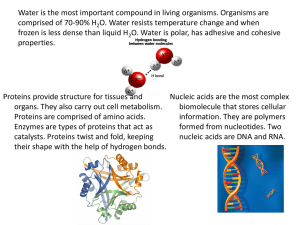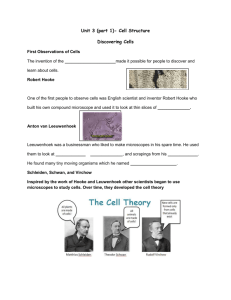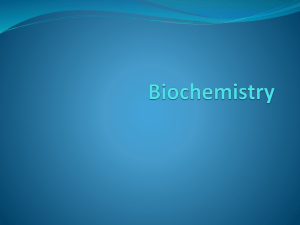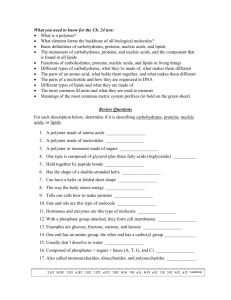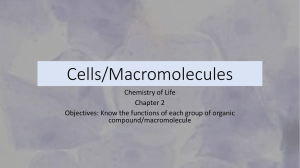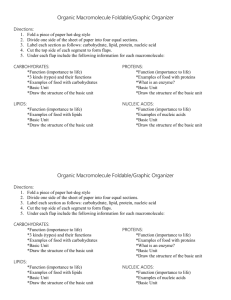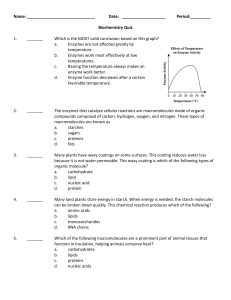midterm
advertisement
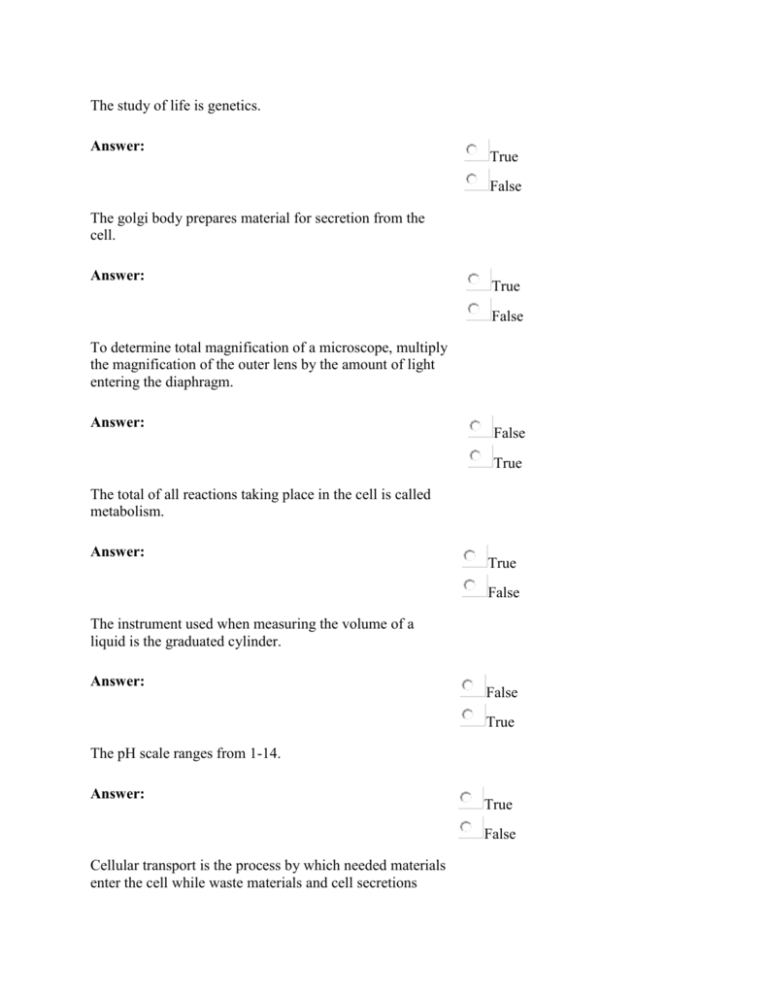
The study of life is genetics. Answer: True False The golgi body prepares material for secretion from the cell. Answer: True False To determine total magnification of a microscope, multiply the magnification of the outer lens by the amount of light entering the diaphragm. Answer: False True The total of all reactions taking place in the cell is called metabolism. Answer: True False The instrument used when measuring the volume of a liquid is the graduated cylinder. Answer: False True The pH scale ranges from 1-14. Answer: True False Cellular transport is the process by which needed materials enter the cell while waste materials and cell secretions leave the cell. Answer: True False The substance that does the dissolving in a solution is called the Answer: mixture suspension solute solvent The area of the cell that makes and stores RNA is the Answer: nucleolus mitochondria ribosome nucleus The chemical breakdown of glucose that uses oxygen or some other inorganic substance is Answer: fermentation anaerobic respiration cellular respiration photosynthesis A possible solution to a problem that is testable is called the Answer: variable setup experiment hypothesis The four main elements found in living things are Answer: hydrogen, carbon nitrogen, and fluorine carbon, helium, oxygen, and hydrogen carbon, nitrogen, oxygen, and calcium carbon, hydrogen, oxygen, and nitrogen The region of the substrate that can bind with a specific enzyme is called the Answer: complex site active site substrate site product site If a solution has a pH of 6, it is a(n) Answer: neutral charged acid base Catalysts in cells are special proteins called Answer: substrates DNA products enzymes The movement of water across a selectively permeable membrane Answer: photosynthesis metabolism diffusion osmosis In diffusion, particles move toward areas of _________ concentration. Answer: lower any of the above higher the same The four groups of organic compounds found in living things are Answer: hydrogen, oxygen, nitrogen, and carbon nucleic acids, carbohydrates, lipids, and fats carbon dioxide, nucleic acids, carbohydrates, and proteins carbohydrates, lipids, proteins, and nucleic acids Which of the following is not a part of the cell theory? Answer: all organisms are made up of one or more cells new cells come from existing cells by reproduction Cells are the basic unit of structure and function in all living things All cells come from non-existing cells Bacteria are an example of a(n) ____________ organism. Answer: eukaryotic none of the above prokaryotic multicellular The step of the scientific method that you would do after the experimentation would be Answer: state your conclusion analyze the data of the experiment formulate the hypothesis observation
